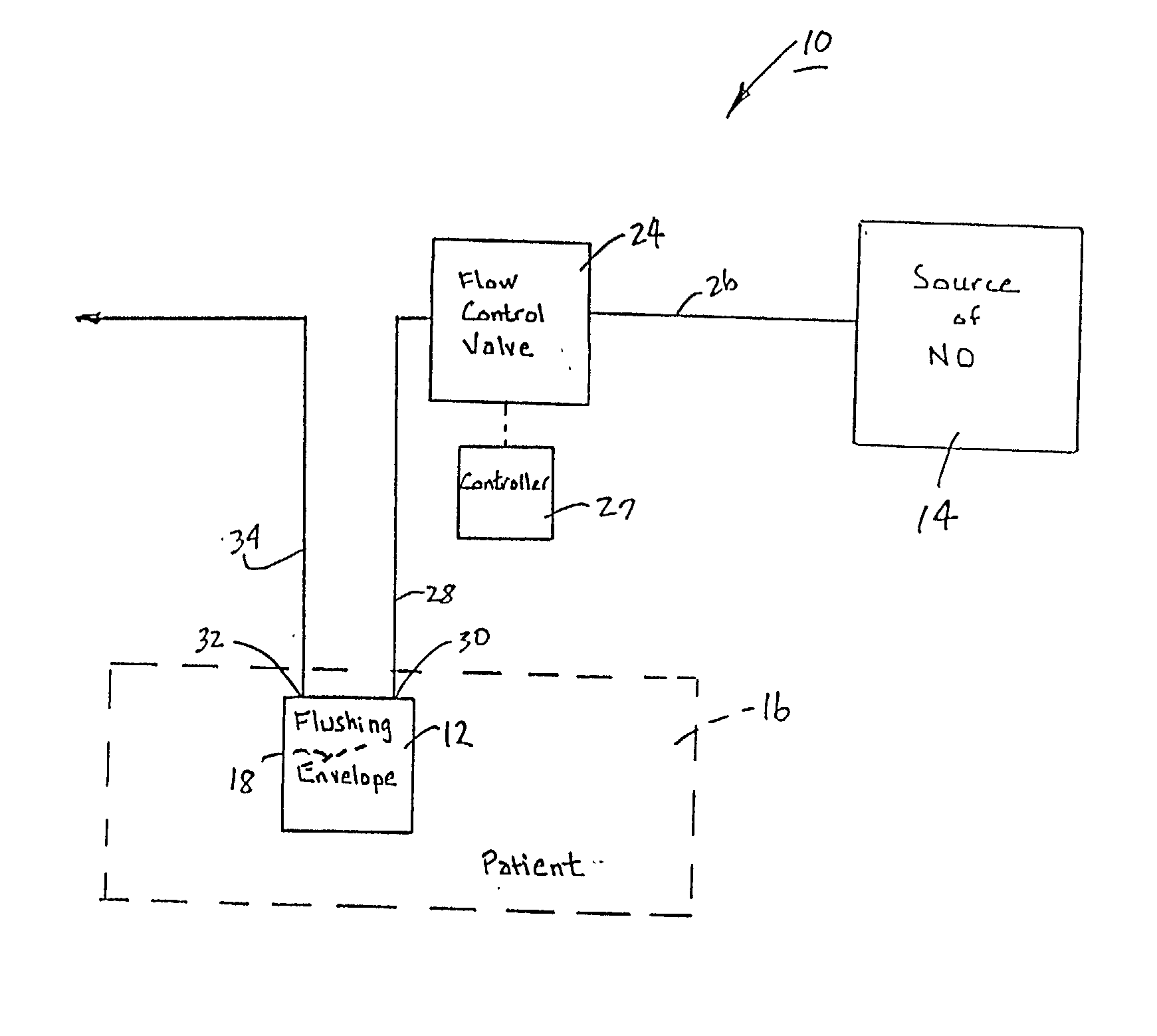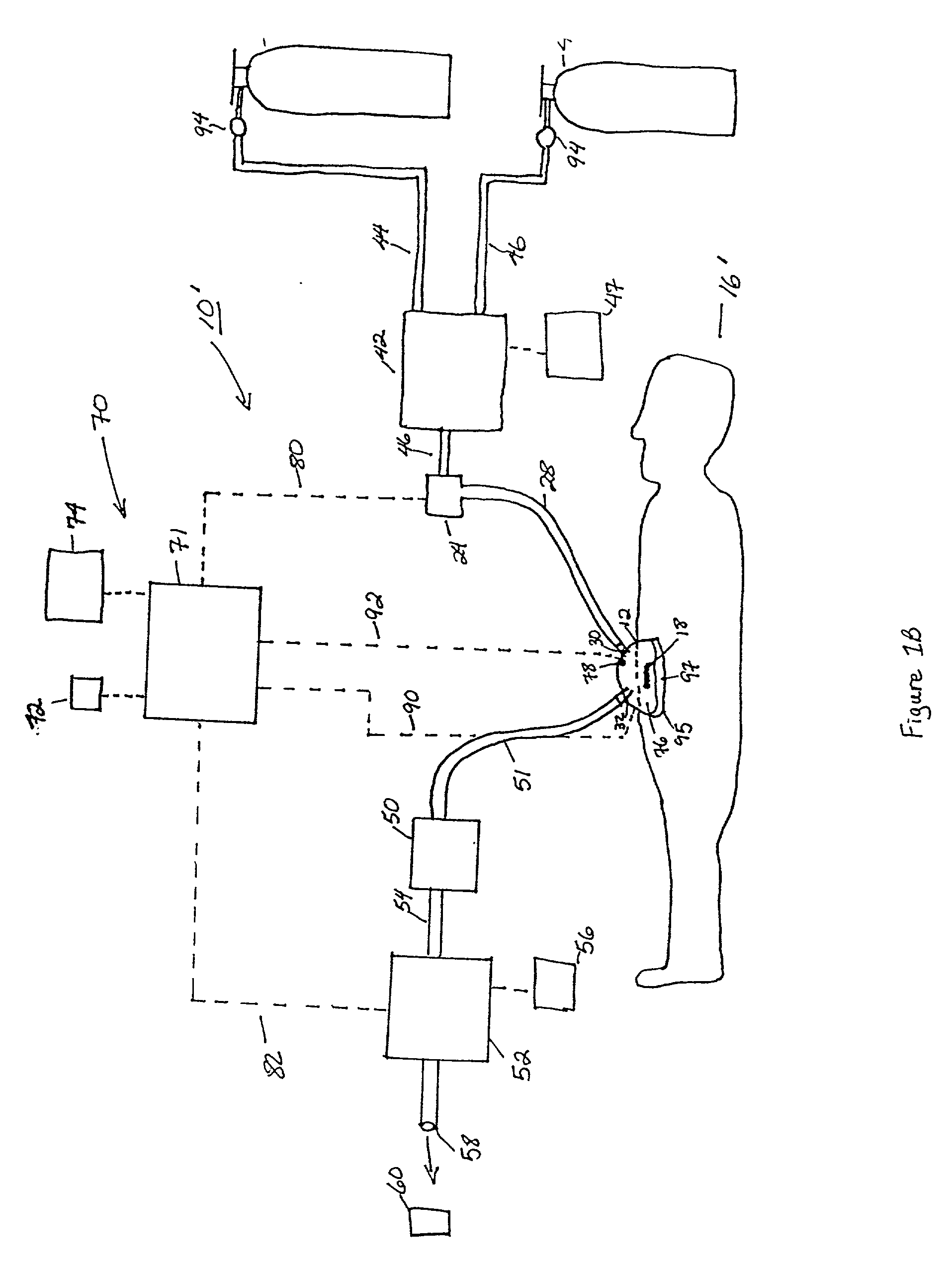System and method for the prevention of infections in human patients using nitric oxide
a technology of nitric oxide and human patients, which is applied in the field of system and method for the prevention of infections in human patients using nitric oxide, can solve the problems of increasing the resistance of infective agents such as bacteria to conventional antibiotics, contaminating the wound site, and lingering foreign materials that can cause infections
- Summary
- Abstract
- Description
- Claims
- Application Information
AI Technical Summary
Benefits of technology
Problems solved by technology
Method used
Image
Examples
Embodiment Construction
[0032] Other objects, features and advantages of the invention will become apparent from a consideration of the following detailed description and the accompanying drawings.
[0033] As discussed above, the inventor has discovered that wounds or lesions can be treated by applying nitric oxide to the site in a manner that controls the concentration of nitric oxide applied and prevents the nitric oxide from leaking into the environment surrounding the treatment area. In general, this is achieved by an NO delivery system 10 as shown in FIG. 1A. As shown in FIG. 1A, NO delivery system 10 includes a flushing envelope 12 fluidically connected to an NO gas source 14, and is mounted in place on a patient 16 over a wound or lesion 18 to apply NO to wound 18 on a patient.
[0034] More specifically, as shown in FIG. 1A, system 10 includes NO source 14 fluidically connected to flow control valve 24 by a conduit 26. Flow control valve 24 can include, for example, a proportional control valve that ope...
PUM
 Login to View More
Login to View More Abstract
Description
Claims
Application Information
 Login to View More
Login to View More - R&D
- Intellectual Property
- Life Sciences
- Materials
- Tech Scout
- Unparalleled Data Quality
- Higher Quality Content
- 60% Fewer Hallucinations
Browse by: Latest US Patents, China's latest patents, Technical Efficacy Thesaurus, Application Domain, Technology Topic, Popular Technical Reports.
© 2025 PatSnap. All rights reserved.Legal|Privacy policy|Modern Slavery Act Transparency Statement|Sitemap|About US| Contact US: help@patsnap.com



